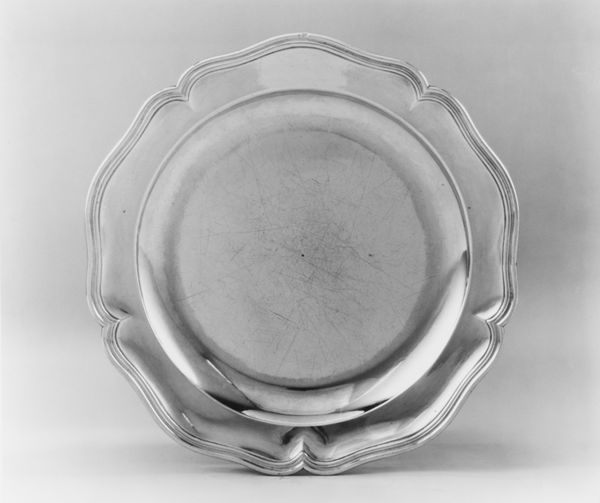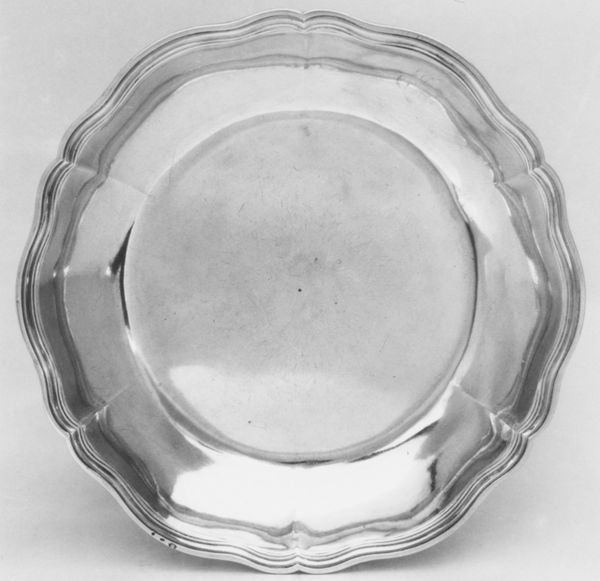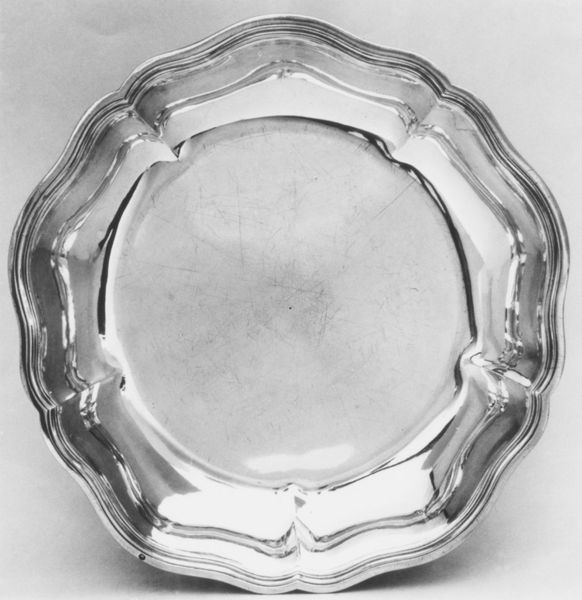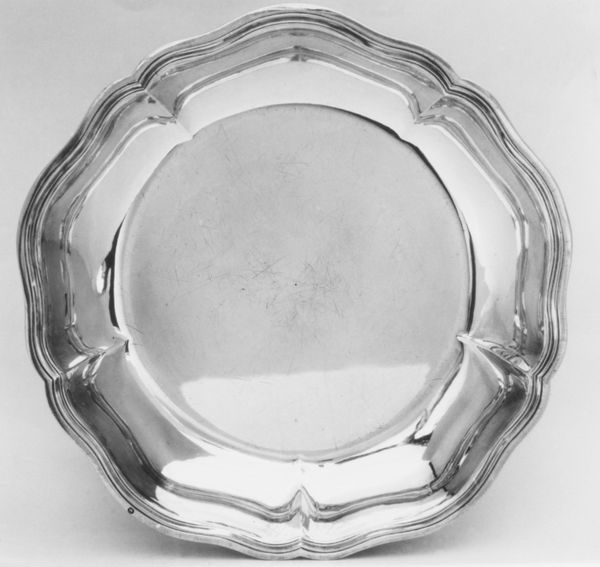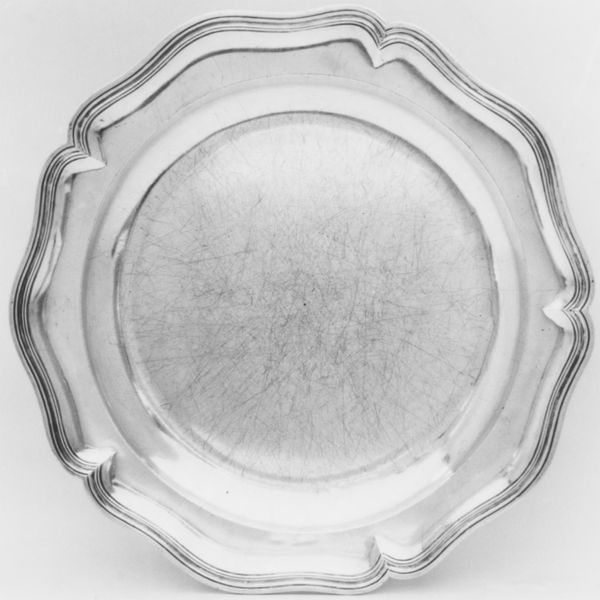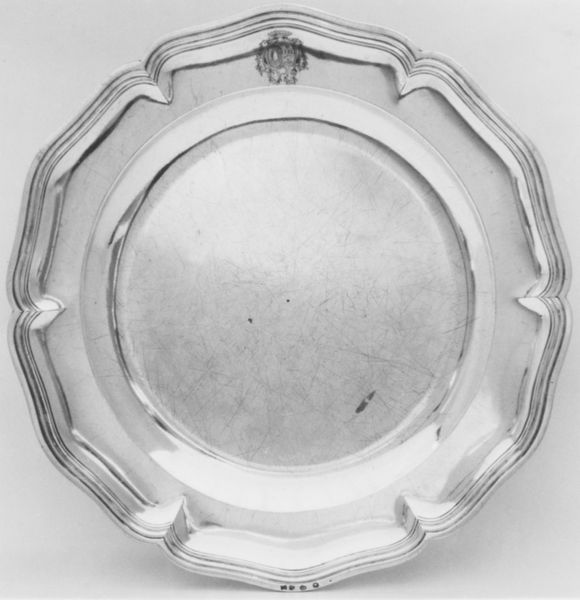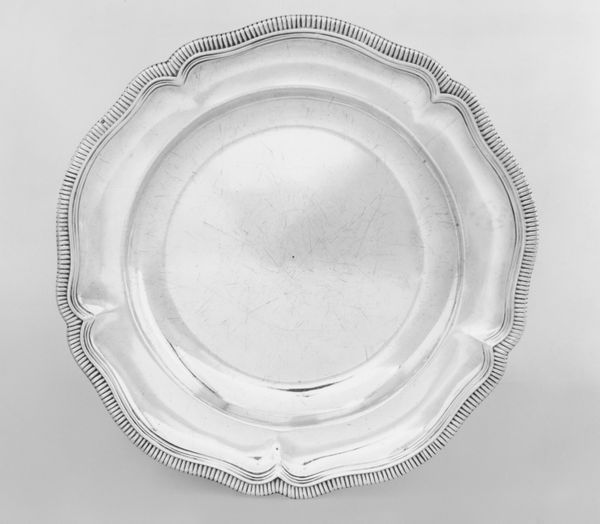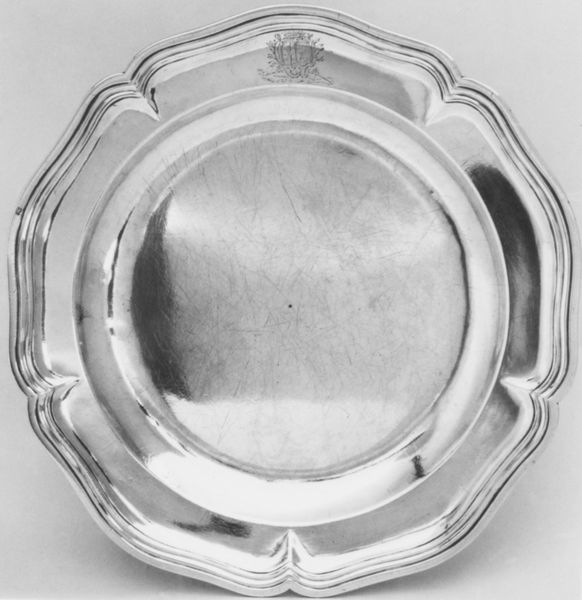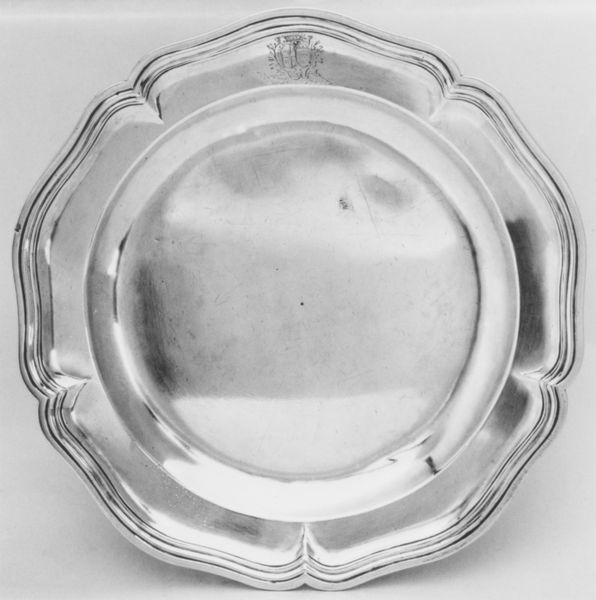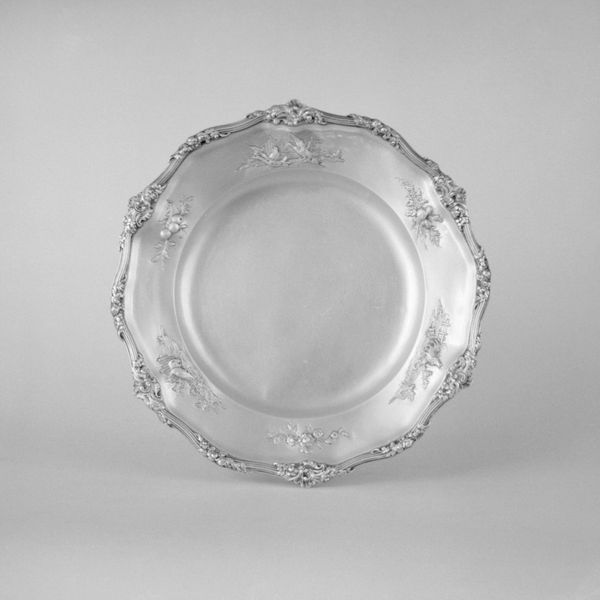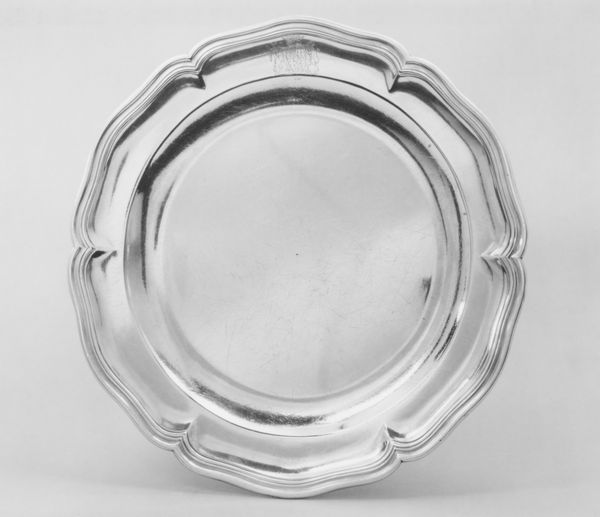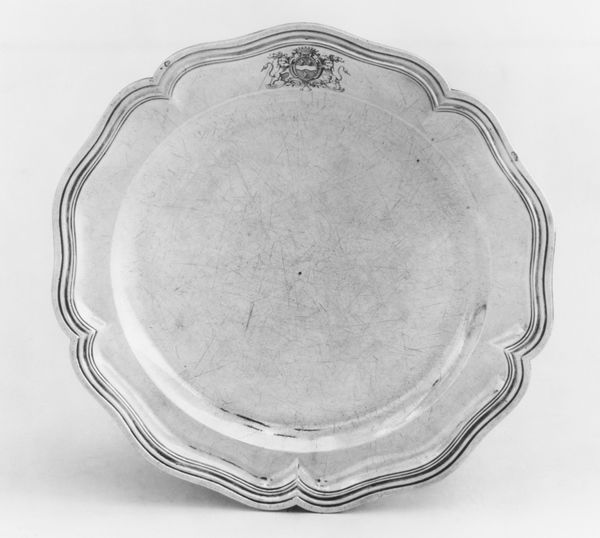
Dimensions: Overall: 1 1/4 × 6 3/4 in. (3.2 × 17.1 cm)
Copyright: Public Domain
Editor: This elegant “Dish,” dating from 1772-1774, was crafted by Paul Segay, a silversmith whose work is held in the Metropolitan Museum of Art. Its simple floral shape in shimmering silver strikes me as embodying understated luxury. What do you see when you look at it? Curator: What I see is an object reflecting the socio-political climate of its time. Silverware like this wasn't merely functional; it was a signifier of status and wealth, particularly in pre-revolutionary France. It's Rococo style embodies the aristocracy’s pursuit of pleasure and ornamentation while inequality swelled in French society. Does its materiality alter your perspective at all? Editor: Absolutely, knowing that makes the piece almost a little provocative in its opulence. Is there significance to it being in a museum collection today? Curator: Certainly. Placing objects like this in a museum context does a few things. It acknowledges their artistic and historical value, but it also raises questions about ownership and accessibility. Whose stories get told through the objects on display? Is it a celebration of craftsmanship or an acknowledgement of inequity? Editor: That's fascinating – I had not considered its presence in the museum to have deeper socio-political relevance! Curator: It is critical to ask questions. Museums, after all, are not neutral spaces. How we interpret and present objects impacts the audience, contributing to or challenging existing power structures and historical narratives. It sounds like this single object carries considerable weight for our reflection. Editor: Yes, thank you – I'll certainly look at decorative art very differently now. The dish seemed like a simple object initially, but I am now understanding its presence and the choices made for preservation within museum collections.
Comments
No comments
Be the first to comment and join the conversation on the ultimate creative platform.
